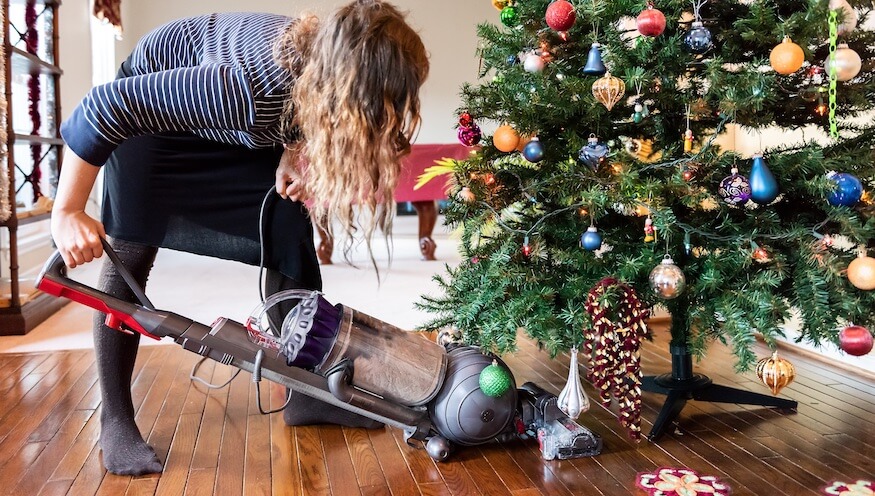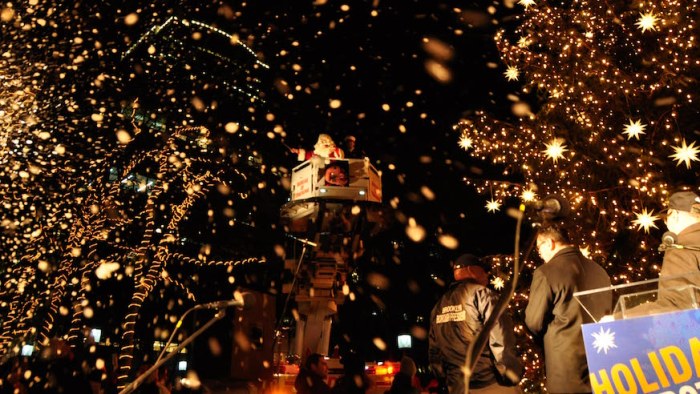It may come as a surprise that some jolly holiday decorating is wreaking havoc on your allergies — after all, isn’t hay fever a spring thing? But experts say dust mites may be to blame if you find yourself sneezing while decking the halls.
The Asthma and Allergy Foundation of America (AAFA) reported that dust mites, which are tiny white arthropods, that commonly trigger allergic reactions, could be living in your holiday decorations.
According to the AAFA, the dust mites, “…feed mainly on the tiny flakes of human skin that people shed each day. These flakes work their way deep into the inner layers of furniture, carpets, bedding, and even stuffed toys. These are the places where mites thrive.”
The mites thrive in temperatures 68 to 77 degrees Fahrenheit and like humidity levels to be between 70 to 80 percent.
According to CBS, dust mites aren’t exactly attracted to your decoration; they are likely attracted to what you store them in.
If you’re suffering from the below symptoms as per AAFA’s website, you might not have a cold or flu, this winter; you might just be having a reaction to dust mites:
Common dust mite allergy symptoms include:
• Sneezing
• Runny nose
• Itchy, red or watery eyes
• Stuffy nose
• Itchy nose, mouth or throat
• Itchy skin
• Postnasal drip (a flow of mucus from behind your nose into your throat)
• Cough
If your dust mite allergy triggers your asthma, you may also experience:
• Difficulty breathing
• Chest tightness or pain
• A whistling or wheezing sound when breathing out
• Trouble sleeping caused by shortness of breath, coughing or wheezing
If you are concerned about having a dust mite allergy, it is recommended to meet with your doctor and discuss the matter.
If you want to try and avoid dust mites, experts recommend spraying down your Christmas tree with water before decorating.
AAFA also recommends:
• Covering mattresses and pillows in zippered dust-proof covers. These covers are made of a material with pores too small to let dust mites and their waste product through. They are also called allergen-impermeable. Plastic or vinyl covers are the least expensive, but some people find them uncomfortable. You can buy other fabric allergen-impermeable covers from many regular bedding stores.
• Washing your sheets and blankets weekly in hot water. You have to wash them in water that’s at least 130 degrees Fahrenheit or more to kill dust mites.
• Getting rid of all types of fabric that mites love and that you cannot easily wash regularly in hot water. Avoid wall-to-wall carpeting, curtains, blinds, upholstered furniture and down-filled covers and pillows in the bedroom. Put roll-type shades on your windows instead of curtains.
• Having someone without a dust mite allergy clean your bedroom. If this is not possible, wear a filtering mask when dusting or vacuuming. Many drug stores carry these items. Dusting and vacuuming stir up dust. So try to do these chores when you can stay out of the bedroom for a while afterward.
• Buying special certified filter vacuum cleaners which help to keep mites and mite waste from getting back into the air. Certified vacuums are scientifically tested and verified as more suitable for making your home healthier.
• Vacuuming is not enough to remove all dust mites and their waste. A large amount of the dust mite population may remain because they live deep inside the stuffing of sofas, chairs, mattresses, pillows and carpeting.
• Avoiding wall-to-wall carpeting, if possible. If you do use carpeting, mites don’t like the type with a short, tight pile as much. Use washable throw rugs over regularly damp-mopped wood, linoleum or tiled floors.
• Washing rugs in hot water whenever possible. Cold water isn’t as effective. Dry cleaning kills all dust mites and is also good for removing dust mites from living in fabrics.
• Keeping the humidity in your home less than 50 percent. Use a dehumidifier and/or air conditioner to do this.
• Using a certified filter with your central furnace and air conditioning unit. This can help trap dust mites from your entire home. Freestanding air cleaners only filter air in a limited area. Avoid devices that treat air with heat, electrostatic ions or ozone.



















